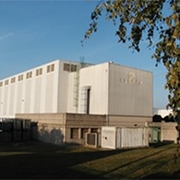IONISOS - Pouzauges
ID RNM
pou
Image

Body
IONISOS - Pouzauges
The premises houses an industrial irradiator, used since 1989, for applications such as sterilizing medical equipment (syringes, dressings, prostheses) and polymerizing plastic materials.
Crédit photo IONISOS
Tooltip
IONISOS - Pouzauges
The premises houses an industrial irradiator, used since 1989, for applications such as sterilizing medical equipment (syringes, dressings, prostheses) and polymerizing plastic materials.
Site unique ?
 return to top
return to top




